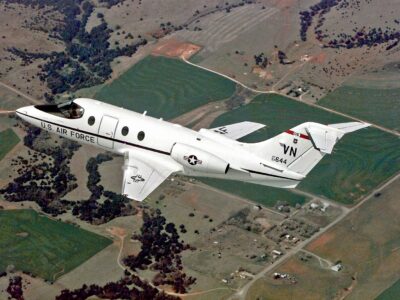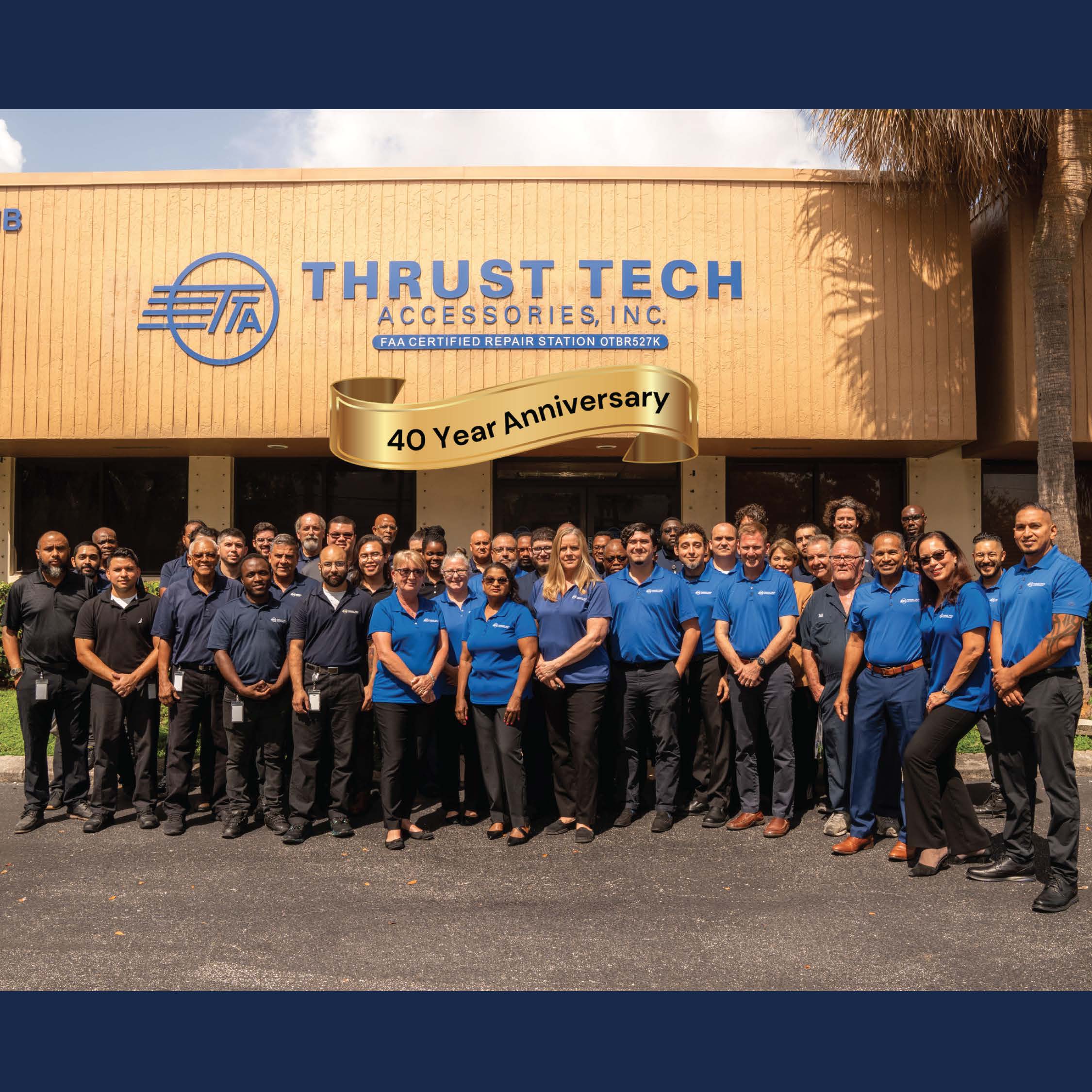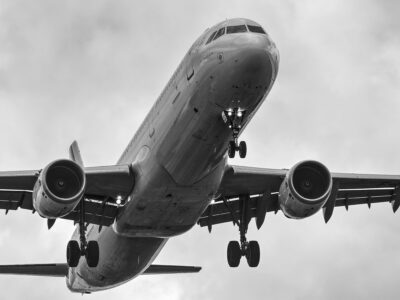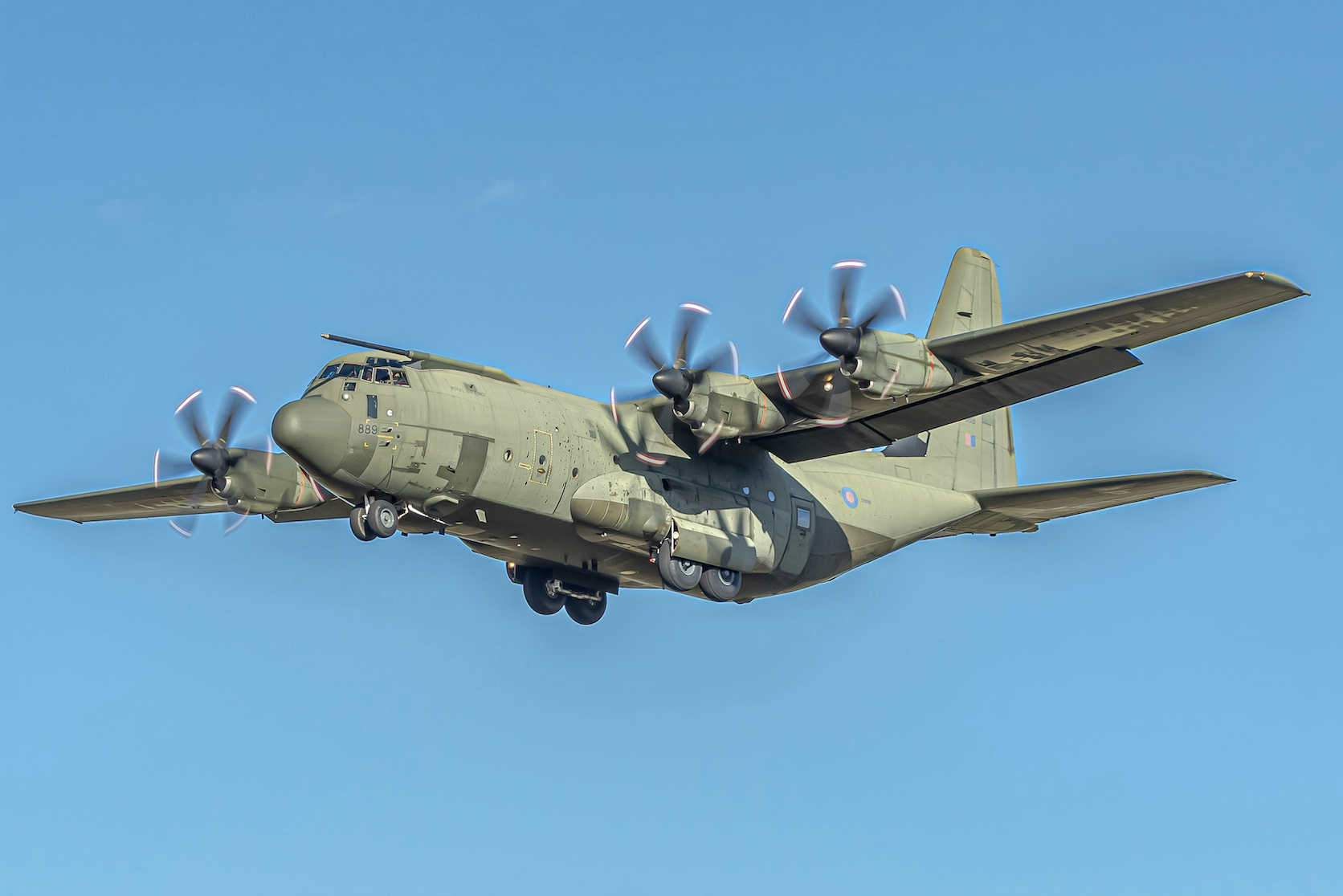
TTA Delivers Safe & Efficient Solutions that Help Ensure the Safety and Airworthiness of Multiple Types of Aircraft
In this ongoing series, Thrust Tech Accessories (TTA) highlights the many different aircraft types presently in service around the world. Join us as we explore the roles venerable aircraft like the C-130 Hercules play in the industry, the niches they serve, and the important challenges they face day by day, year after year, all across the globe.
We also wish to underscore the key role that MROs like TTA play behind the scenes in providing overhaul, repair, and modification of engines and airframe accessory components that keep such aircraft flying properly, safely—and long into the future.
* * * * * * * * * *
The History of the Hercules C-130: A Legacy of Versatility and Reliability
The Lockheed C-130 Hercules, an American four-engine turboprop military transport aircraft, has become an iconic symbol of versatility, reliability, and endurance in aviation history. Since its first flight in 1954, the C-130 has played a crucial role in military and humanitarian missions worldwide. Let’s delve into the rich history of the C-130 Hercules, and then explore the multiple MRO activities performed on the Hercules, ensuring this exceptional aircraft continues to serve effectively in various missions worldwide.
Early Development & Introduction
The genesis of the C-130 Hercules can be traced back to the early 1950s when the U.S. Air Force recognized the need for a new tactical transport aircraft. The USAF sought an aircraft capable of performing a variety of missions, including troop transport, cargo airlift, medical evacuation, and air-to-air refueling. Lockheed, an aerospace company with a strong track record, responded to this requirement with the design that would become the C-130.
The first prototype, designated the YC-130, made its maiden flight on August 23, 1954, from Burbank, Calif. This successful flight marked the beginning of an era. The aircraft demonstrated impressive performance, including short takeoff and landing (STOL) capabilities, which made it suitable for operations in austere environments. Following rigorous testing and evaluation, the C-130A entered service with the USAF in December 1956.
Enhancements and Variants
Over the years, the C-130 Hercules has undergone numerous upgrades and modifications to meet evolving mission requirements.
- C-130B and C-130E: The C-130B, introduced in the late 1950s, featured upgraded engines and increased fuel capacity, enhancing its range and performance. The C-130E, which entered service in the 1960s, included further improvements such as enhanced avionics, additional fuel tanks, and increased payload capacity.
- C-130H: The C-130H variant, introduced in the 1970s, incorporated more powerful engines and advanced avionics, extending the aircraft’s operational life and improving its overall performance. The C-130H remains in service with many air forces worldwide, demonstrating its enduring reliability.
- C-130J Super Hercules: The C-130J Super Hercules, the most modern iteration of the C-130 family, features state-of-the-art technology and significant enhancements over its predecessors. Introduced in the late 1990s, the C-130J includes advanced avionics, digital flight controls, and more efficient engines, resulting in improved fuel efficiency, increased range, and enhanced operational capabilities.
The C-130 Hercules has proven its versatility across a wide range of missions.
The C-130 Hercules has proven its versatility across a wide range of missions, cementing its reputation as one of the most adaptable aircraft in history.
- Military Operations: In military operations, the C-130 has been a workhorse, supporting airlift missions, paratrooper drops, and special operations. Its ability to operate from short, unprepared airstrips has made it invaluable in conflict zones and disaster relief efforts.
- Humanitarian and Disaster Relief: Due to its capacity to deliver aid, evacuate civilians, and provide medical support in disaster-stricken areas, the C-130 has played a vital role in humanitarian and disaster relief missions.
- Specialized Roles: These include aerial search and rescue, weather reconnaissance, and research in extreme environments like Antarctica.
Legacy and Future
More than 2,500 C-130 aircraft have been produced, serving in more than 70 countries. Its longevity and widespread use are a testament to its exceptional design and adaptability. And to be sure, top quality MRO services ensure the C-130’s legacy continues.
* * * * * * *
Maintenance, Repair, and Overhaul of the C-130 Hercules Ensures its Longevity and Reliability
To maintain the Lockheed C-130’s operational readiness and extend its service life, comprehensive MRO procedures are crucial in ensuring the “Herky-Bird” continues to soar in the skies, meeting the demands of its diverse roles with excellence.
TTA is proud of its unique role among the panoply of service providers worldwide that help keep this workhorse in tip-top condition.
With a focus on servicing many of the smaller components of this airframe, Thrust Tech Accessories is proud of its unique role among the panoply of service providers worldwide that work in concert to keep this workhorse in tip-top condition.
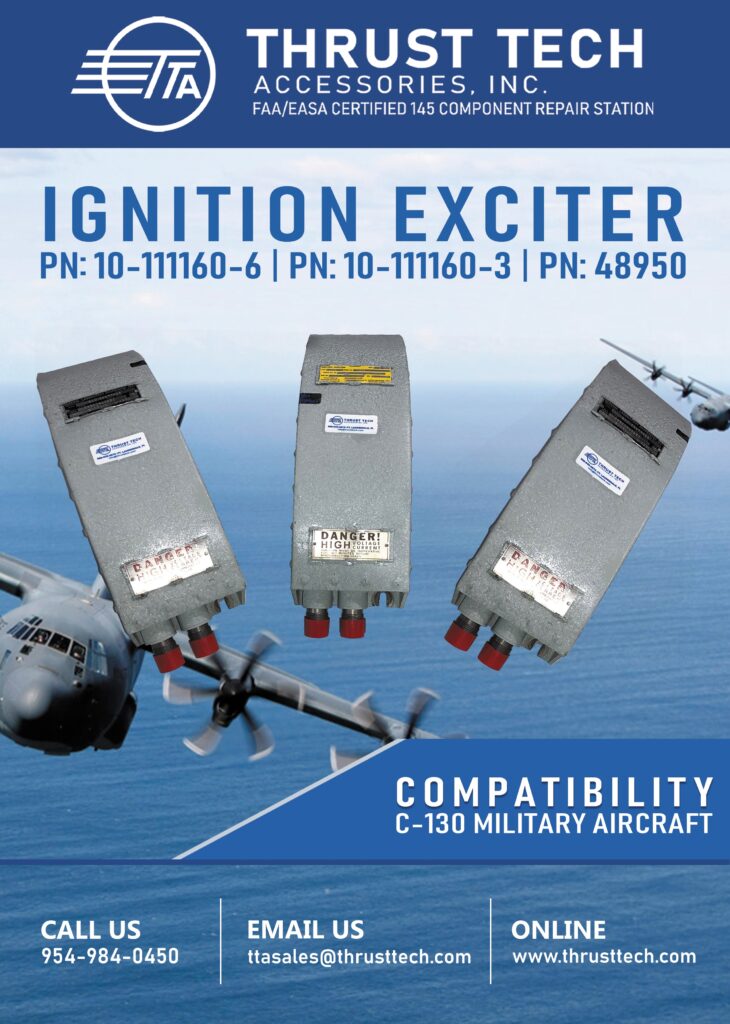
TTA provides specialized services on multiple C-130 components, from AC Generators, Hydraulic and Fuel Pumps to Ignition Exciters, Rotary Actuators, and Dual Flow Valves. To find out more about TTA’s wide-ranging capabilities to support your fleet and to obtain competitive program bids, send an email to TTAsales@ThrustTech.com or call 954-984-0450.
To gain insight on the comprehensive range of MRO work required to ensure this exceptional aircraft continues to serve effectively, let’s explore the multiple levels of MRO activities performed throughout the life of the Hercules.
Routine & Intermediate Maintenance
Routine maintenance involves scheduled inspections and minor repairs to ensure the aircraft remains airworthy and operational. Intermediate maintenance involves more in-depth inspections and repairs than routine checks but does not require the extensive disassembly of the aircraft. Key components of both routine and intermediate maintenance include:
- A-Checks: Performed approximately every 400 flight hours, A-checks involve oil changes, hydraulic fluid top-ups, tire checks, and detailed inspections of the aircraft’s structure and systems.
- B-Checks: Typically conducted every 800 flight hours, B-checks involve deeper inspections of the aircraft’s systems and structure, including avionics, electrical systems, and hydraulics. Technicians also perform functional tests to ensure all systems operate correctly.
- Component Replacements & Repairs: During intermediate maintenance, technicians replace or repair worn or damaged components, such as engine parts, landing gear, and flight control surfaces and are often required to outsource these specialized functions. This is where TTA steps into gear. Operators around the world often must rely on certified MRO facilities like ours in Ft. Lauderdale to provide fast-turn maintenance services that aim to prevent system failures that could lead to unscheduled downtime or in-flight emergencies.
Operators around the world rely on certified MRO facilities like ours in Ft. Lauderdale to provide fast-turn maintenance services …
Depot-Level Maintenance
Depot-level maintenance, or heavy maintenance, involves extensive inspections, repairs, and overhauls that require specialized facilities and equipment. This level of maintenance is performed less frequently but is critical for the long-term airworthiness of the C-130.
- C-Checks: Conducted every 18-24 months, C-Checks involve a comprehensive inspection of the entire aircraft. Technicians disassemble and examine major components, including the fuselage, wings, and tail. This level of inspection helps identify structural fatigue, corrosion, and other issues that could compromise the aircraft’s integrity.
- Overhauls & Rebuilds: Overhauls and rebuilds are extensive processes that restore the entire aircraft to a like-new condition. Technicians replace or refurbish major components such as engines, landing gear, and avionics systems.
Specialized Maintenance
In addition to routine, intermediate, and depot-level maintenance, the C-130 requires specialized maintenance procedures tailored to its unique missions and configurations.
- Avionics Upgrades: Given the rapid advancement in technology, avionics systems in the C-130 need periodic upgrades.
- Mission-Specific Modifications: Depending on the C-130’s role, it may undergo mission-specific modifications to support C-130s configured for aerial firefighting and medical evacuation variants.
Conclusion
The C-130 Hercules is an invaluable asset to military and civilian operations worldwide. Through comprehensive MRO procedures, this versatile aircraft remains reliable, safe, and mission-ready.
From routine checks to extensive overhauls, and the meticulous care and attention to detail that small-component service providers like TTA can offer, the C-130 will continue to meet the demands of its diverse roles with excellence.
The Lockheed C-130 Hercules stands as a symbol of aviation excellence, with a storied history that spans over six decades. From its early days as a tactical transport aircraft to its current status as a versatile workhorse, its enduring legacy is a testament to its robust design, adaptability, and unwavering reliability, securing its place as one of the most significant aircraft in aviation history.
About Thrust Tech Accessories
Thrust Tech Accessories would enjoy the opportunity to explore cost-effective measures to meet the specialized needs of the C-130’s fascinating and storied airframes. The Ft. Lauderdale-based MRO offers capabilities such as testing, repair service, overhaul service, and of course fast turn-around times. TTA supports a number of private and business aircraft operators as well as regional airlines, along with overseas air carriers and rotorcraft operators in numerous countries around the globe.
To find out more about TTA’s wide-ranging capabilities to support your fleet and to obtain competitive program bids, contact us via email at TTAsales@ThrustTech.com or call 954-984-0450.
PHOTO CREDIT: David Hili, Unsplash Royalty Free Images


